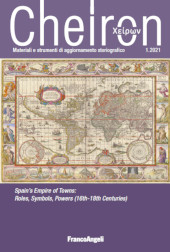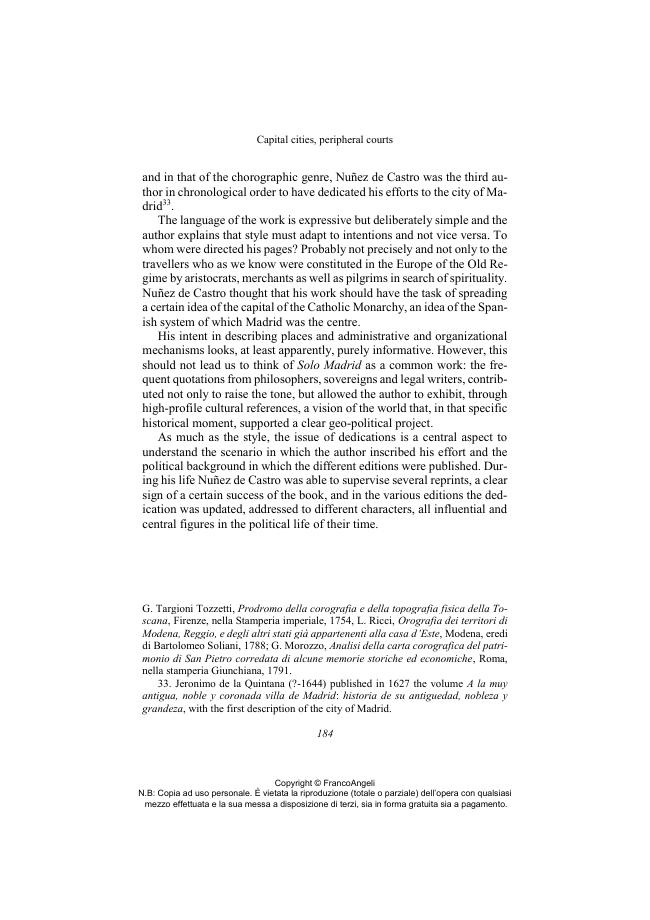Capital cities, peripheral courts
174-193 p.
The central role of the city in European history has been studied from a vast number of perspectives using multiple methodologies. In the centuries of the old regime, the Spanish Monarchy relied heavily on its cities to govern and control its vast territories in Europe and in the New World. In the second half of the 17th century, the work by Alonso Nuñez de Castro, Solo Madrid es corte, enjoyed great success and was published in several editions. The analysis of this text (in light of the contemporary European political events, of the shifting power balance from the Spanish to the imperial branch of the Habsburg dynasty, and of the new needs related to the problem of the Spanish succession) allows us to suggest some hypotheses for the interpretation of concepts such as 'composite monarchy' and 'polycentric monarchy' that have recently characterized the historiographical debate. [Publisher's text].
Le città hanno avuto nella storia europea un ruolo centrale che è stato studiato sotto molteplici aspetti e da varie discipline. Nei secoli dell'Antico Regime, la Monarchia Cattolica ha poggiato sulle città gran parte del sistema di governo e controllo dei territori sul continente europeo e nel Nuovo Mondo. Tra la metà e la fine del XVII secolo fu più volte ripubblicata un'opera di Alonso Nunez de Castro Solo Madrid es corte. L'analisi di questo testo (alla luce di alcuni fatti della politica europea, dei mutati rapporti di forza tra ramo spagnolo e ramo imperialeasburgico, nonché delle necessità connesse con il problema della successione spagnola), consente di formulare alcune ipotesi interpretative sull'uso dei concetti di 'monarchia composita' e 'monarchia policentrica' che hanno recentemente caratterizzato il dibattito storiografico. [Testo dell'editore].
-
Articles from the same issue (available individually)
-
Information
ISSN: 1127-8951
DISCIPLINES
KEYWORDS
- città, corte, monarchia composita, monarchia policentrica, Alonso Nuñez de Castro, Cities, Court, Composite Monarchy, Polycentric Monarchy, Alonso Nuñez de Castro



